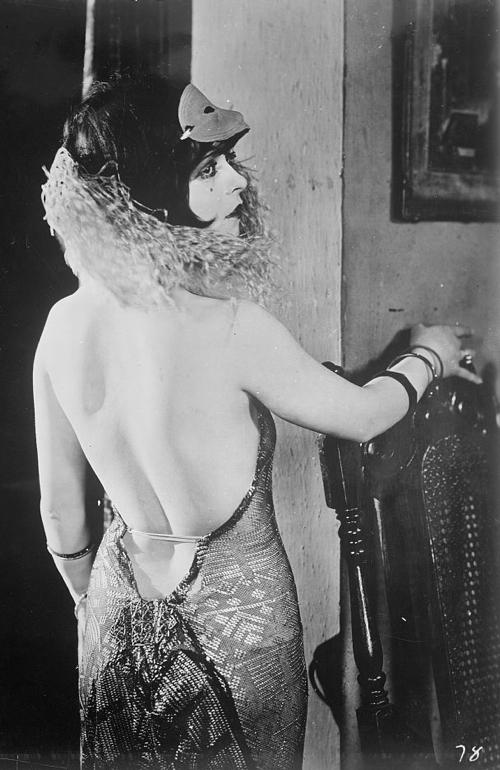After many, many hours of hand-sewing, and a stupid mistake and far too much angst, my 5th proper Historical Sew Fortnightly Challenge: Peasants & Pioneers, is done.
I was inspired to make an 18th century brown linen (brown indicating unbleached, rather than dyed brown) shift when I scored a 1.3m length of enzyme washed linen in the $5 end-of-roll bin at Fabric Warehouse. At first I was disappointed that it wasn’t white, and then a helpful blog follower reminded me that brown linen was used to make lower-class shifts throughout the 18th century.
I did a bunch more research on brown linen (which I will be sharing with you on Thursday), and made up my shift:
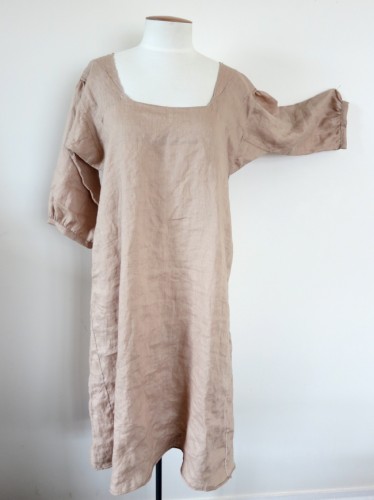
Late 18th century ‘brown’ linen shift
I didn’t have enough fabric to make up a mid-18th century style shift, so I went for late 18th century, when shifts became narrower.

Late 18th century brown linen shift – back
While they are still slightly puffed, late 18th century sleeves also become narrower, with widths the same as their length.

The sleeves with underarm gussets and slightly gathered cuffs
Since I had such lovely fabric to work with, I decided to go the whole 10 yards and hand-sew the shift with linen thread. Shifts are actually easier by hand – it’s so much easier to set gussets by hand than machine.
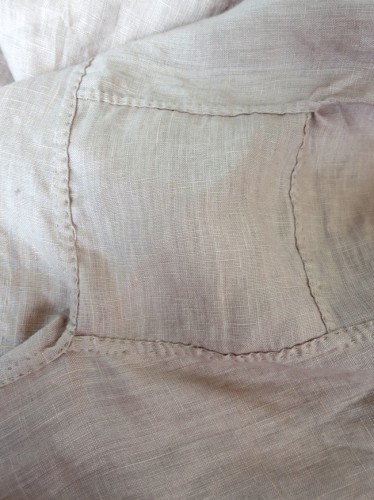
Hand-sewn underarm gussets
I’m quite pleased with my hand stitching – it’s so fun to do on linen, you can just finger press everything, and the thread almost becomes one with the weave of the fabric.
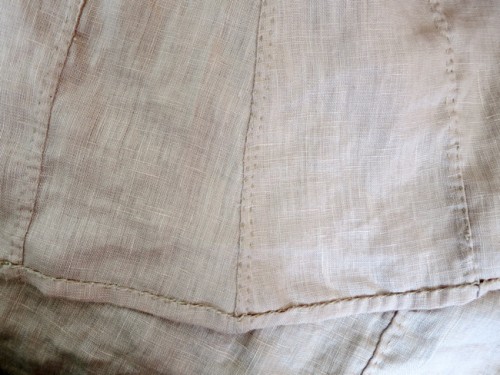
Flat-felled seams and whip-stitched hems
Unfortunately, for all my beautiful hand-sewing, I screwed up the last step and cut the neckline way, way, way too big. You probably noticed it in the first two pictures. So I had to patch it so it was at least remotely wearable.
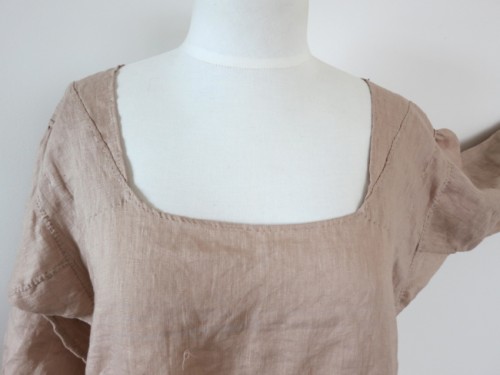
Patches to narrow the neckline
The patches are just hemmed rectangles of fabric that bring the shoulders in. I may add another rectangle to the back neckline to bring it up higher as it is so low.
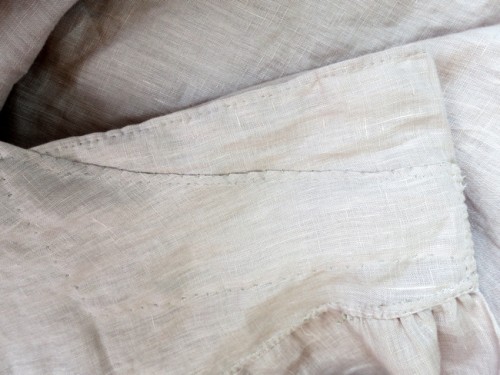
The rectangular patches
I’m gutted that I made such a stupid mistake and ruined what would have been a perfectly historically accurate garment. However I rather like the patches as a decorative feature in a modern way. It gives a rather elegant ‘falling off the shoulders’ without falling off the shoulders look. I may have to play with that idea for a modern shift dress.
And, thanks to the vast quantities of documented patched garments in the 18th c, they probably aren’t that far off historically accurate either!
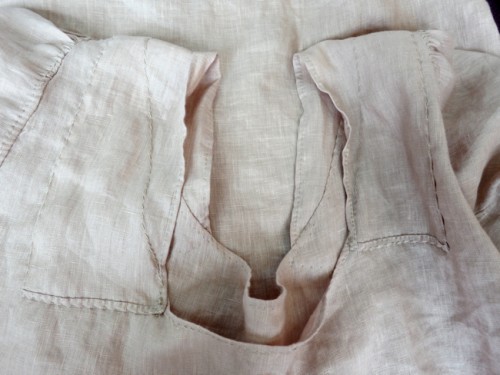
The patches from the inside
I’ve actually sewed the shift with all the flat felled seams facing out, so that the underside is smoother to wear against the skin. And then the patches ruined that too.
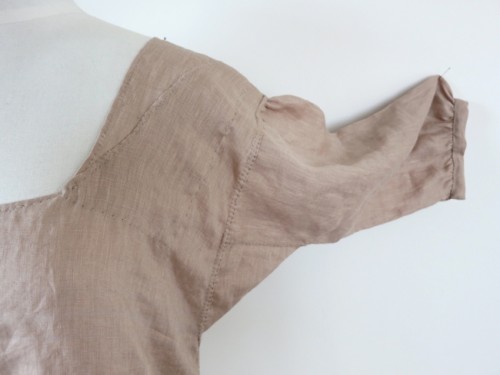
Stupid but elegant patching
Other than the back neckline, I still need buttons to fasten the cuffs of the shifts, so I guess it isn’t 100% done.
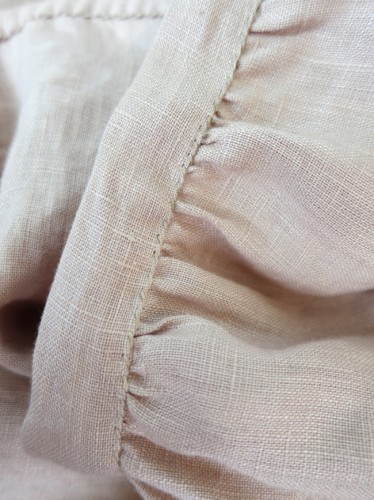
Whipstitched cuffs which still need buttons
The Challenge: Peasants & Pioneers
Fabric: 1.3m unbleached enzyme-washed linen –
Pattern: none, based on historical examples
Year: late 18th-early 19th century.
Notions: linen thread, 2 self-fabric buttons to be added later.
How historically accurate is it? Sigh. Hand sewn, accurate fabric (even Wm Booth doesn’t sell real unbleached linen), accurate stitches and pattern…and then I stuffed up the neckline. 80%?
Hours to complete: 11 – hand sewing takes time, but at least I can multi-task while doing it.
First worn: Not yet.
Total cost: $5 (thank you Fabric Warehouse!)

Hand sewn, flat felled skirt gores














